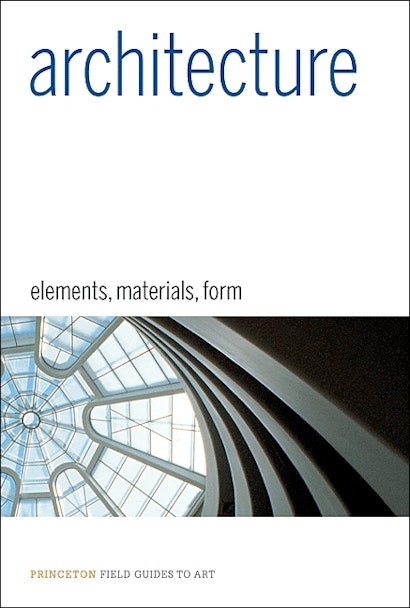By way of more than 2,000 years of architectural history, this richly illustrated book defines and shows all the major components of the art—from theory, plans, and models to structural elements such as columns, arches, and domes, to materials and decorative elements. With beautiful color photographs on virtually every page, and precise captions that point directly to important aspects of each photo, this book provides an easy-to-use visual grammar of the nearly infinite variety with which the elements of architecture have been used in buildings across the ages and around the world—from Western Europe and Greece to the Americas, the Middle East, China, Japan, India, and Africa. Each entry includes a definition, illustrated examples, and detailed analysis and explanation, all presented in the context of architecture’s historical evolution. Architecture frequently juxtaposes famous and lesser-known buildings from widely different times and places, providing delightful surprises for the expert as well as a fresh, informative, and pleasurable introduction for general readers and students.
Francesca Prina is an independent art historian who specializes in the history of architecture. Her books include One Thousand Years of World Architecture (Thames & Hudson).
"There's no shortage of architectural primers, but this one stands out for two reasons. First, the eye-popping clarity of the 325 photographs. Second, its refreshing breadth: There's a section on murals as well as metallic alloys, and the section on staircases includes a 1932 stadium ramp as well as the entrance to a 1528 chateau. More than a cheat sheet, it's a guide to be enjoyed."—John King, San Francisco Chronicle
"This title combines the best of two art-book formats: it is filled with excellent color photographs that illustrate architectural forms, yet it is also the size of a field guide and can be held comfortably in the hand. . . . Although this is not a standard reference book, it delights the eye with its juxtapositions, and could be the inspiration for a field trip to see these wonderful buildings."—V.E. Young, Choice
"This is not merely a guidebook to the world of architecture. . . . No reader can deny the densely illustrated nature of this book. . . . The author has done her best to compile texts and images that are educational for undergraduate students. The book also presents an informative companion for readers who to visit buildings located in various regions and built in different historical periods."—Gevork Hartoonian, Architectural Science Review
"Francesca Prina's handbook is intelligently written and beautifully illustrated. The book's thematic organization cuts across styles and historical periods. Mixing ancient and contemporary, western and non-western, it establishes thematic affiliations around the idea of architecture as the organization of space, the disposition of material, and the deployment of technology. The annotated photographs give the presentation a telegraphic immediacy. An indispensable teaching tool."—Stan Allen, Architect and Dean of the School of Architecture, Princeton University
"This elegant book stimulates the imagination. It is about experiencing architecture—space and procession, light and shadow, inside and outside. It is about making architecture—by designing, by crafting, by building. It is also about history, the evolution of our lives and environments."—Robert Geddes, fellow of the American Institute of Architects and dean emeritus of the School of Architecture, Princeton University
"An unexpectedly enchanting and highly original book. What brings it to life is the author's sensitivity to visual form. Again and again some simple architectural element is illustrated with an unexpected and delightful example, or facing pages juxtapose images of entirely different applications of an element, demonstrating the diversity and sheer creativity of architecture. The author's ability to illustrate how contemporary buildings evolved from older and simpler forms is especially appealing."—Christine Smith, Harvard University Graduate School of Design
"This densely illustrated, attractive, and useful introduction to the profession and history of architecture has no equivalent that I know of. The format is well suited to the subject and the wide range of examples is an asset."—Cammy Brothers, University of Virginia

